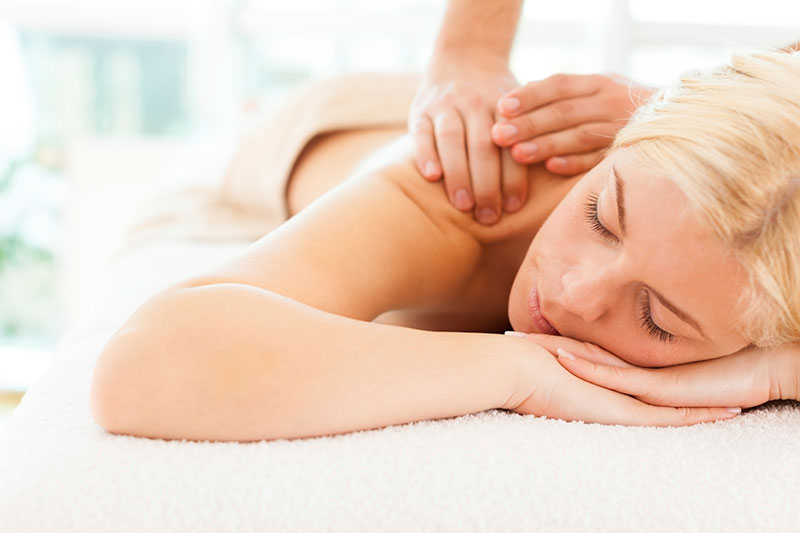Everyone loves a massage, right? It’s a time to relax. But massage, often given in spas and salons, is now being used in a variety of medical specialties as an innovative tool.
Samantha Mullen, from Elements Massage and Bodywork in Williamsburg, Va., uses her skills with lymphatic massage to stimulate clients’ immune systems.
“All kinds of fluids go to the nodes, like toxins, viruses and waste, that’s the first filter. That’s why when you are sick, usually your lymph nodes in your neck are swollen—they are backed up and can’t filter. So we start with the chest and neck first, no matter where they are feeling pain, even if it’s their foot,” she says.
That makes this type of massage important for patients who’ve had any of their lymph nodes removed, for example, to prevent the risk of the cancer spreading through the lymphatic system that runs throughout the body.
“I can tell when we start that the skin is full, kind of stiff and swollen. After 15 minutes, I can see and feel a difference: it’s soft and pliable. Guests report ‘feeling lighter’ when we’re done. The massage has gotten things moving again,” Mullen says.
Fertility enhancement is another type of medical massage. People trying to get pregnant are often stressed, says Mullen, who adds, “I think the body gets the message that it’s too stressed to get pregnant.” But there are reflexology points that can be pressed to stimulate ovarian and uterine points Mullen previously worked with patients at a fertility clinic in New York, and several studies have shown that massage can help decrease stress and anxiety, which can encourage pregnancy. A study published in Medscape Women’s Health in 2004 showed that two groups of women trying to become pregnant both received fertility massage, with one group receiving in vitro fertilization. All of the women received targeted bodywork therapy to their abdominal and pelvic area. In both groups, the rates of pregnancy increased (71 percent and 66 percent) significantly higher than the estimated odds.
Michele Merrill, a certified medical massage practitioner and massage therapist, uses massage with another group: dental patients. She helps people with jaw disorders, like TMJ (Temporomandibular joint) and teeth grinding, to relax their jaw and neck muscles, and with patients spending extended time in the dental chair.
“I do massage to relieve tension on the jaw—it affects your head, and can give you tension headaches. They can feel the pain in their jaw, but often don’t connect it to headaches and migraines,” Merrill says.
She helps people get some relief during long procedures, too. “During a root canal, you have to have your mouth open that whole time, and it can feel locked up. Massage helps relieve that tension in the jaw and neck,” she says.
Everything in the body is connected, and Merrill says that many times people don’t realize that massaging a connected part of the body can help with localized pain. “If you notice, every time you open your mouth the muscles on your neck and front contract differently. It affects the neck and back muscles. Sometimes I massage the temples, as well,” she says.
Merrill works with other medical massage clients, and encourages massage after surgery to reduce swelling.
“The body will have a tendency to protect the site and tighten around it. Once the healing is done, sometimes the muscle doesn’t go back to where it was before. For example, after rotator cuff surgery, the arm will stay put even though you’ve had the surgery. Massage can be more targeted on the muscle,” Merrill says.
Mullen says that many people receive massage as part of their medical care. She estimates that 65 percent of her clients come for medical reasons. While some insurance companies cover massage, it’s still not widely accepted. If it’s prescribed by a doctor as part of your treatment plan, it may be more likely to be covered, so it’s worth a conversation about how medical massage may help you.



